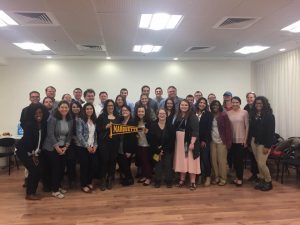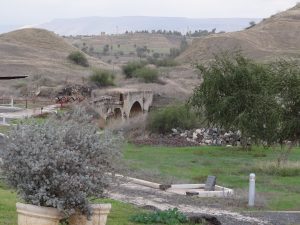Please join me in welcoming our guest bloggers for the month of May: Michael Anspach and Anthony (Tony) Cotton.
Our Student Blogger for May is Michael Anspach. Michael just completed his second year at Marquette Law. He has been elected Editor in Chief of the Marquette Law Review for Volume 101 and he is also Founder of the Law School’s Organization for Student Wellbeing. He was born and raised in Toledo, Ohio, and he received his B.A. from Boston College with a Major in Philosophy and a Minor in Music. Shortly after graduating from Boston College in 2012, Michael began studying the Eastern traditions, specifically Hatha yoga, meditation, and Ayurveda (the traditional Hindu system of medicine). He became a certified yoga, meditation, and Perfect Health: Ayurvedic Lifestyle instructor through Deepak Chopra’s school in Carlsbad, California. Since that time, Michael has been a daily yoga and meditation practitioner. While in the process of starting his own yoga business, Michael came to realize two things: First, he did not want to turn his spiritual practices into a money-making endeavor, and, second, he enjoyed the contract work, negotiation, and intellectual stimulation, that goes along with any startup business. Shortly after coming to this realization, Michael made the decision to attend law school. This summer, he will work at the firm of Anspach Meeks Ellenberger LLP, based out of Toledo, Ohio, where he will focus on civil litigation defense, specifically the defense of nationally-based, long-term care facilities.
Tony Cotton is our Alumni Blogger for May. Tony was born in Waukesha, Wisconsin. He attended the University of Wisconsin-Whitewater for two years before transferring to UW-Madison. At Madison, Tony majored in Political Science and was twice elected to student government. Tony the attended Marquette University Law School, where he focused heavily on criminal and international law. During his second year of law school Tony was awarded a grant from the Public Interest Law Society so that he could investigate human rights abuses in Eritrea, East Africa. In the summer of 2004, Tony traveled throughout Eritrea to interview civilians and prepare claims for people who had suffered damages as a result of the Eritrean-Ethiopian war.
While still in law school, Tony secured an internship with the Federal Defender’s Office in Milwaukee. AS a law clerk, Tony helped draft a habeas brief to the 7th Circuit Court of Appeals and he was invited to Washington, D.C. to help the attorneys prepare arguments for one of the most significant criminal cases in United States history: United States vs. Booker (2005). After graduation in 2005, Tony began working at Kuchler & Cotton, S.C. in Waukesha. All of Tony’s practice involves defending those accused of crimes.
Tony was elected to the Board of Directors of the Wisconsin Association of Criminal Defense Lawyers (WACDL) and has served as President of that organization. He has also served on the Board of Directors of the National Association of Criminal Defense Lawyers (NACDL). Tony has been recognized by Super Lawyers, every year since 2008, and was selected by The Wisconsin Law Journal as an “Up and Coming Lawyer” in 2010. He also writes a monthly column for the Wisconsin Law Journal.
 Six-day War, Israel extended permanent Israeli residency to Arabs that were then living in Jerusalem. Others not then residing in Jerusalem were not extended the same right of residency. Today, East Jerusalem serves as the capital of the Palestinian territory. While all of the territory’s citizens have Israeli residency, only a small percentage of East Jerusalemites have Israeli citizenship. Without Israeli citizenship, residents can only vote in municipal elections. Additionally, East Jerusalemites can lose their right of residency if they live abroad for more than seven years.
Six-day War, Israel extended permanent Israeli residency to Arabs that were then living in Jerusalem. Others not then residing in Jerusalem were not extended the same right of residency. Today, East Jerusalem serves as the capital of the Palestinian territory. While all of the territory’s citizens have Israeli residency, only a small percentage of East Jerusalemites have Israeli citizenship. Without Israeli citizenship, residents can only vote in municipal elections. Additionally, East Jerusalemites can lose their right of residency if they live abroad for more than seven years.
